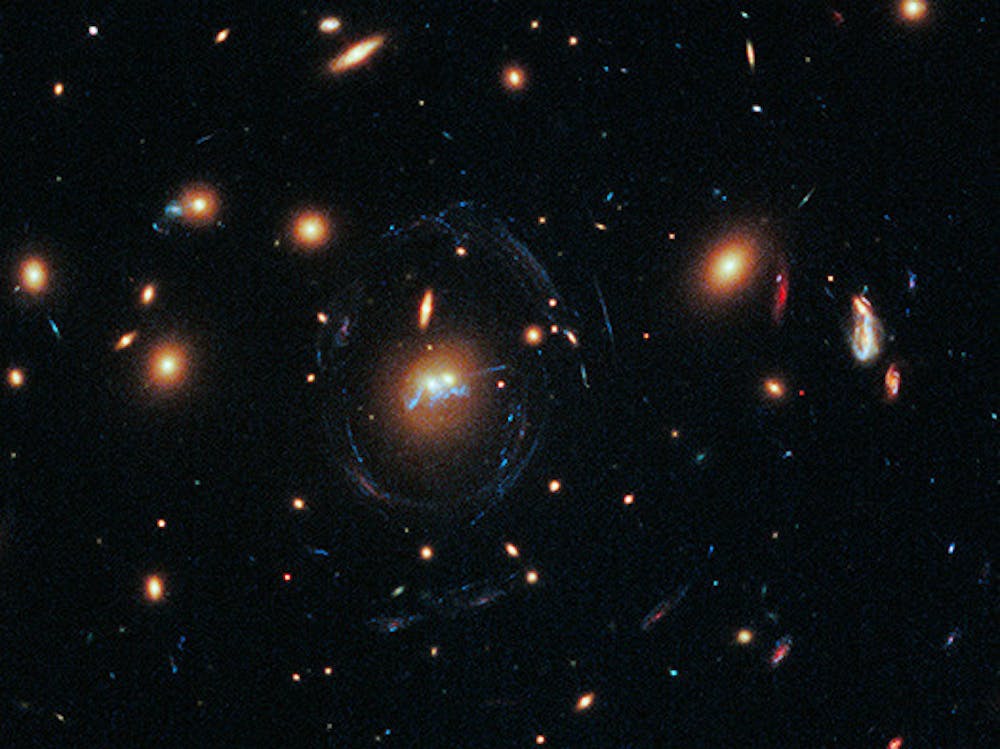With February rapidly drawing to a close, let’s dive into last week’s science and technology headlines: Microplastics are complicating efforts to define a new epoch in Earth’s history, poor metabolisms may be the cause of intestinal knotting, machines are reading minds to learn more about the mystery of the brain, and astronomers have discovered a billion-year-old black hole eruption that may have led to an unusual formation of stars.
Microplastics and their use in determining geological eras
Geologists have previously considered using microplastics to define a new era in Earth’s history: the Anthropocene, the age marked by the effects of human activity on the Earth.
Microplastics tend to settle in the bottom of lakes. However, a recent study published in Science Advances discovered plastic particles that had migrated down into older sedimentary layers, including samples that dated centuries before plastic production began. Researchers — led by Inta Dimante-Deimantovica at the Latvian Institute of Aquatic Ecology — conducted the study in three of Latvia’s lakes and have concluded that microplastics cannot be used directly as a dating tool to trace the beginning of the Anthropocene.
Still, some scientists believe microplastics could still provide some valuable insights. While not every lake shows the same findings as the ones in Latvia, and the extent to which the migration of microplastics occurs varies by location, this finding provides yet another example of the profound impact humans have had on our planet’s ecology.
Studies conducted in tadpoles provide insight into intestinal malrotation
Around 1 in 500 babies are born with intestinal malrotation, a condition where the person’s intestines do not twist correctly — most people’s intestines neatly coil counterclockwise. Although intestinal malrotation can go undetected, in other cases, it can lead to gut obstructions and blockages.
For researchers at North Carolina State University in Raleigh, the African clawed frog’s similarly coiled intestinal structure provided useful insight into the causes of the birth anomaly in humans.
The scientists exposed the frog embryos to atrazine, a common herbicide, and observed that many of the frogs' intestines grew in the opposite direction. The atrazine was found to have disrupted the frogs’ metabolisms, hindering energy production and causing both stunted intestinal growth and intestinal malrotation.
Although this does not prove what causes intestinal malrotation in humans, the experiment’s findings do connect errors in metabolic processes to a birth defect. The question of what exactly disrupts the metabolism is not yet clear, but scientists now have more clues that will hopefully lead to the discovery of prevention methods.
Machines are reading minds and uncovering the mysteries of the human brain
Since the first observations of electrical activity in the brain were made about a century ago, scientists have come a long way in developing new tools that use electrical activity to reveal more about the brain.
Brain-computer interfaces (BCIs) are implants that use electrodes to capture and then analyze signals with the help of a decoder program. These implants have helped people with paralysis, but they are a unique tool that has allowed scientists to explore brain function.
Contrary to most textbook images of the human brain, it is not divided into neat categories. In fact, researchers observed that the brain’s neuron pathways were intermixed.
With BCIs, scientists learned more about the brain's incredibly complex patterns of thought and imagination. And although BCIs are still a rather new developing technology, scientists are working to improve their decoding system to both understand more about the brain and to improve the results for patients who have lost motor functions.
Stellar arrangement caused by a huge black hole explosion
Billions of years ago, an enormous eruption occurred from a black hole located in a galaxy in a system far, far away (approximately 3.8 billion lightyears). Astronomers have discovered this titanic event in the system known as SDSS J1531 using NASA’s Chandra X-Ray Observatory, among several other telescopes. The study was conducted at the Center for Astrophysics at Harvard & Smithsonian.
SDSS J1531 is a massive system that, at its center, contains two massive galaxies in the process of collision. Osase Omoruyi, who led the study, compared the discovery to a paleontologist finding an ancient fossil — albeit one that triggered the formation of a unique pattern of stars in the SDSS J1531 system.
This single event that occurred billions of years ago is believed to have set in motion the creation of star clusters spanning thousands of lightyears of distance. It took millions of years after the eruption for the clusters of stars to form a pattern bearing a striking resemblance to beads on a string.





